- Home
- Tom Clancy
Shadow Warriors: Inside the Special Forces Page 13
Shadow Warriors: Inside the Special Forces Read online
Page 13
Though conventional soldiers don’t normally concern themselves with the civilians who find themselves caught up in the tides of war, when it became obvious that the political and psychological fallout from this lack of concern could negate a brilliant battlefield victory, military leaders had to seriously adjust their thinking. In the U.S. Army, the Special Forces were the first to be taught this lesson officially and put it into practice as a principle of war.
Before long, Green Berets, using an American version of Mao’s “Rules for Conduct,” began to have a powerful impact on the lives of “little people” in Third World nations living in remote, often jungle, areas. Previously, such people did not much figure in the overall scheme of military maneuver. And for their part, the “little people tended to be suspicious of foreign soldiers in their midst. However, a combination of personal qualities and soldier skills soon began to increase cooperation and mutual trust, and these came to grow into admiration and friendship.
The Green Berets paid attention to all kinds of little things that other soldiers rarely cared about. For example, they helped a villager increase his water supplies by showing him a simple well-digging technique. They worked side by side with him to build a log bridge that would save a half-mile trudge around a swamp to reach his primitive patch of farmland. They showed him how to dig an irrigation ditch. They gave him seeds that grew into better vegetables than he had ever imagined possible. But strangest—and most heartwarming—of all, they paid attention to the villager as an individual. They could speak to him in his own dialect—maybe not fluently, but enough. And they shared the lives of the village people. They ate their food and drank their drink; they sat around their fires in the evening and chatted with them; they slept in huts like theirs.
Once friendship had been established, the military task of defending the village began. Green Berets traced village fortification outlines, and villagers placed row on row of sharpened stakes in the ground, angled toward approach routes. With Green Beret help, they dug protective shelters inside the village perimeters. They set up an alarm system, using an old tire rim or an empty artillery shell case, to warn of attack. During all this time, Green Berets worked alongside the villagers, and when attack came, they fought side by side with them.
Green Beret A-Detachments have always featured medical expertise—two highly trained medical specialists, with each of the remaining eight troopers cross-trained in medical skills.
The justification for this expertise came out of the original Special Forces mission, which was to organize and train guerrilla and insurgent forces. During their early days, guerrillas are exceedingly vulnerable. To protect themselves while they grow in strength, they must hide in difficult-to-reach areas such as jungles, swamps, or rugged mountains. Under such conditions, day-to-day survival is often a triumph in itself. If a guerrilla is sick or wounded, he has no outside help on which to rely.
Here is where Green Beret medical skills enter the picture. Green Beret medics could provide the medical knowledge to keep guerrillas going as functioning fighters.
Those skills were put to similar use in the villages, which were scarcely less isolated than the guerrilla bases, and provided even more reason for friendship and trust. Often for the first time, villagers had access to basic dental care, prenatal care, antibiotics, vaccinations, and nutrition and disease-prevention advice.
Training for these missions was intense, difficult, and as realistic as possible. Green Berets returning from foreign missions were sucked dry of information, and they helped train the men replacing them. Replicas of villages were constructed, accurate to the finest detail. In order to prepare for a mission, the Berets lived exactly as they expected to live in the field—food, shelter, work, language, everything.
As a training aid, Yarborough had a portion of a Vietnamese guerrilla village constructed at Fort Bragg, complete with artifacts, livestock, and escape tunnels. On one of his later trips to Vietnam, Yarborough was both amused and gratified to find a replica of his replica village being used by the Vietnamese army at their Infantry Training Center.
Bill Yarborough’s devotion to intense Special Forces preparation also included uncommon (for the Army) attention to specialized personal equipment, such as clothing, medical kits, and rations. Predictably, the “big” Army monolith had a hard time handling this.
Bill Yarborough takes the story from here:
I have always felt that equipment for a Special Forces soldier was primarily for the purpose of keeping him alive and it had little to do with weaponry. The health of the soldier was what counted, and we could best take care of this by making sure he had the best clothing, field medical gear, and rations. As a matter of fact, I felt that if the American had a superior weapon when he was out among indigenous forces who had to make do wath something more basic, his own credibility suffered. I was not convinced, for instance, that the M-16 should be a Special Forces weapon; a survival weapon was more the kind of thing an SF soldier wanted. Or else, if he didn’t have the right weapon for particular conditions, he’d take it from the enemy or improvise.
To this end, the training system at Fort Bragg included an extraordinarily wide variety of weapons collected from worldwide sources. A Special Forces soldier mas expected to be familiar with all of them and be able to assemble and use them.
I didn’t see the Special Forces soldier as a direct combat instrument. I saw him as a catalyst who could gather around him those whom he could then train and lend help to lead, and what weapon he carried was secondary.
So I put an enormous amount of time in personal equipment and special uniforms, even though such things were not looked on kindly by the Quartermaster Corps and others, who looked at such views as overly romantic, and that in the Army, the essential thing is to give a soldier a good weapon, enough ammunition, clothes on his back, shoes on his feet, and transportation.
In 1961, I went to the Quartermaster Depot at Natick , Massachusetts, to see what kind of tropical gear we had in stock for the guys who were going to Southeast Asia. When I got there, I was in for a shock. They didn’t have anything suitable for jungle action. All the World War II experience fighting in the jungle and the tropics was apparently down the drain.
I did find in the Quartermaster Museum what they called “tropical fatigues.” But these had the same imagination as ordinary dung shovelers’ fatigues. No utility whatever. There was a shirt and pants. The shirt had two small breast pockets and no lower pockets. The pants had ordinary pockets, no cargo pockets. The cloth, though, was okay. It was the kind of cloth that was close-woven enough to make it impervious to mosquito bites.
So I said, “Well, let’s see. The cloth is good. We can start with that. ”And I went from there. “Send me one of those down,” I told them, “and we’ll doctor it up a bit and see what we can do about making it a little more worthy for combat. ” So I took what they were calling “tropical fatigues” and put cargo pockets on the trousers and two large pockets with bellows pleats on the shirt. I angled the upper pockets on the shirt to allow easier access when web equipment was worn, added epaulets, and also buttoned tabs at the waist to allow the blouse to be gathered. The sleeves were designed to be rolled up, if there were no mosquitoes around and weather permitted.
Little by little, with our help, the Quartermaster had a jungle uniform for Vietnam—even though they never admitted they had a requirement for one.
Yet making it happen was a hard thing. The paperwork alone for the issue of the jungle uniform weighed many pounds. And with the first batch of uniforms came orders that they would only be worn in the field, and only by Special Forces.
That of course changed.
It was most fortunate for the United States Army, he concludes with masterful understatement, that when U. S. troops were eventually sent to Vietnam in huge numbers, the tropical field uniform we designed for Special Forces was available for general use.
Meanwhile, as Bill Yarborough was forging his new breed of soldier,
the “big” Army continued on its more traditional paths, casting an ever-colder eye on the oddball operation in North Carolina, with its presidential favor, its substantial funding (“What they get, 1 lose”—the military has always operated in a zero-sum mode), and its license to raid the best units for their best men—especially their best NCOs—and “take them out of the Army,” as one four-star general put it.
Generals, as generals will, began to murmur among themselves against the Green Beret upstarts and Bill Yarborough’s “private army.” The talk never became public, but a consensus was building in favor of the tried and true: “They’ve been feeding soldiers Laotian food down there at Fort Bragg. What the hell for? Firepower wins wars. Not lousy food.” Or more generally: “They’re going their own way down there. They don’t respect the rules. They do things their way and not the Army way.”
Some of these charges were not without substance. Though Yarborough never actually broke regulations, he bent them; and where there were holes, he slipped through them. A strict interpretation of regulations would not have been kind to him.
In his defense, he was never dishonest. When you have to improvise, you almost inevitably find yourself slipping between rules. In fact, it’s hard to imagine how else to build an organization the rules never foresaw.
The negative currents came to a head soon after John Kennedy’s assassination. General H. K. Johnson, the Army’s very conventional-minded new chief of staff (he took over from General Maxwell Taylor when Taylor became ambassador to South Vietnam), was one of those generals who simply did not understand the new breed of soldier. He was terribly bothered by what Yarborough was doing. He was just getting away with too much.
Johnson’s solution: He had to show Bill Yarborough who was the boss. The Army had several layers between Yarborough and the President. In Johnson’s view, Yarborough had ignored them.
Johnson was, in fact, a good and honorable man, and a hero—he’d been a Japanese prisoner during World War II. Before he moved, he visited Yarborough’s s operation—and he left very impressed. “I’ll tell you,” Johnson told another general friend, “he’s put together a heck of a fighting team.”
Even so, Yarborough had to go. And besides, he had been on the job for four years. It was time to move on.
By then, Yarborough had gotten his second star, as major general, and he was sent to Korea, where he represented the UN command as the Senior Member of the Military Armistice Commission at Panmunjon. There he dealt with the North Korean and Chinese negotiators in a way that only his experience in Special Forces could have prepared him for. The job called not only for negotiating skills, but also for PSYOPs and propaganda skills. Most observers called him the toughest negotiator the Communists faced at Panmunjon.
From Korea, he served at the Pentagon, where his most important job was to run Army Intelligence (his official title was Assistant Chief of Staff for Intelligence). IIe was later (in 1966) promoted to Lieutenant General and given command of I Corps Group in Korea, and then in 1969 he moved on to Hawaii as Chief of Staff and Deputy Commander-in-Chief of U.S. Army, Pacific. He retired in 1971, after thirty-six years of active service.
DURING Bill Yarborough’s tenure as commander of Special Forces, his Green Berets not only carried out their mission in Southeast Asia but were also active in a number of other parts of the world.
From a base in Panama, several teams were sent to the countries of Central and South America, always at the invitation of those countries. In Colombia, for example, ten years of insurgency, called “La Violencia,” had vielded something like 300,000 deaths. Green Berets and Colombian security officials worked together to produce the first comprehensive plan—based on civic action to help the local economy, health, and education—to deal with the terror. Though Colombia was to suffer from later terrors, La Violencia ended.
Green Berets in arctic gear worked their way by dogsled, snow weasel, and airplane around the northernmost perimeter of the United States, bringing medical and dental care and planning skills.
Other Green Beret teams worked in the Pacific on islands of the American Trust Territories, building roads, schoolhouses, and recreational facilities. Others worked in the Philippines. Still others worked in Ethiopia and Congo (later Zaire, later Congo again).
When Bill Yarborough took command of Special Forces in 1961, he presided over four years of metamorphosis and explosive growth, and left as a major general. No matter how often and how badly he’d ruffled the feathers of his superiors fighting for his beloved Green Berets, his career had prospered.
DURING those four years of ferment, a great many warriors joined the now-transformcd U.S. Special Forces. One of them was a young captain named Carl Stiner. It is now time for his story.
IV
COUNTRY CARL
Carl Stiner grew up on a hundred-acre farm in rural northeast Tennessee, eight miles from the nearest town, La Follette. In the 1930s and ’40s, the divide between town and country in that part of the world was vast. The main roads were paved; the rest were dirt or gravel. There were occasional trips to town, but people still mostly shopped in country stores. There were few cars, and electricity was scarce, finally reaching the Stiner farm in 1948. People made their own entertainment. For boys, most of that was outdoors—hunting or hiking in the nearby Cumberland Mountains, and swimming or fishing in Norris Lake, the big TVA project built in 1936.
It was a God- and country-loving community. Everybody went to (mostly) Baptist churches on Sunday, and every able-bodied young man served his country.
A bus line ran twice a day between La Follette and nearby Middlesboro, Kentucky. Stiner still has vivid memories of looking out across the fields at age six or seven and watching older boys walk toward the highway to catch the bus to the induction center in La Follette during World War II. Whether they’d been drafted or volunteered, they all went. Later, he listened with respect as the returning boys, now men, recounted their combat experiences—the dread, discomfort, and pain, but the fun, too, and the joy of parades through newly liberated towns. The sacrifices had a purpose that even a ten-year-old could recognize.
When the time came, he knew he owed his country no less service than these men had given.5
LIKE most folks in rural Appalachia, the Stiner family’s roots in America went far back.
The Steiner (the original spelling) family came to this country from Germany around 1710. Five Steiner brothers settled in Pennsylvania, then Steiners moved to Virginia and North Carolina. In 1820, Henry Stiner (the spelling had simplified by then) crossed over into East Tennessee, looking for land. He found what he was looking for at the Great Bend of the Powell River. The soil along the river was rich, the woods were full of deer, the river was abundant with fish, and only four other families were living nearby. Henry purchased 1,000 acres and then went back to North Carolina to collect his family. Several other families returned with them to the Powell River Valley. By 1889, the settlement had three stores, a steam sawmill, and a gristmill; living there were twenty-seven families, including more than a hundred children; there were thirty-five dogs and sixty-five horses.
Later, in 1936, the rising of Norris Lake displaced the community at the Great Bend of Powell River. Among those forced to move were Emit Stiner and his family. Emit was Carl’s father.
Carl Stiner remembers his family this way:
Starting in 1936, my father worked as a diamond drill operator and powder man for the Tennessee Valley Authority, constructing Norris Dam as well as some of the other TVA dams that were built in the thirties and forties. He drilled foundations for the dams and set the charges for blasting out rock or spillways. By the time the war started, he already had several children, which meant he was not drafted, but was instead taken into service for the construction of the Oak Ridge nuclear plant (a few miles from La Follette).
When he was not building dams and nuclear plants, my father farmed. But during the war, Oak Ridge took precedence.
The plant was star
ted in 1942 (though its existence was not officially known until President Truman announced production of the atomic bomb in August 1945). It was a crash program, and security was very tight. The facility was protected by a high Cyclone fence, armed security guards patrolled on horses, and construction workers had to live like army forces in a barracks on the plant complex (where they were often kept busy seven days a week). But occasionally my father could get loose and come home on the weekends. When he was away, my mother, Hassic Stiner, supervised the farm and took care of the family.
I was the oldest of five—three other brothers and a sister. And my paternal grandparents also lived with us.
We all worked hard. Counting leased land, we farmed about two hundred acres, raising tobacco, grain crops, and cattle—and that was before tractors. Horses and mules did that job. About the time one of the boys turned six, he went to the fields to work; and during the growing season (when we weren’t at school) we worked sunup to sundown, weather permitting, six days a week. Even if it rained, there was something to do, like pitching hay, or grinding feed for the cattle.
It was hard, but our life was not harsh. There was time off on Sunday for church, friends, and play. Since there was only one car per family which wasn’t used much for recreation, our friends would congregate at a common place, which was as likely as not our farm. Fifteen or twenty boys might gather there on Sunday afternoons for ball games or boxing.
The boys liked our farm because of its central location, its large level field for our ball games; and there was plenty of livestock, in case we decided to do a little rodeoing (but never when my dad was around, because he didn’t like you messing with the livestock). Sometimes we ended the day by choosing sides and fighting a corncob battle among the barns. One of these could last for a couple of hours. Getting hit on the side of the head with a wet corncob is an experience that’s not easy to forget.

 Changing of the Guard
Changing of the Guard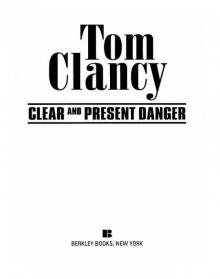 Clear and Present Danger
Clear and Present Danger Hounds of Rome
Hounds of Rome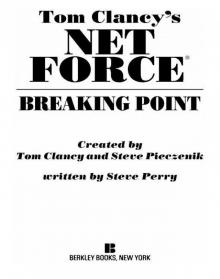 Breaking Point
Breaking Point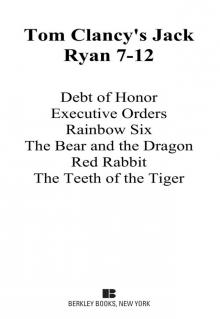 Tom Clancy's Jack Ryan Books 7-12
Tom Clancy's Jack Ryan Books 7-12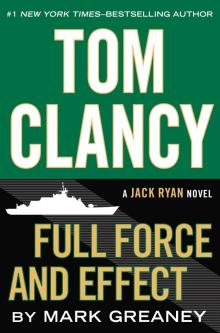 Full Force and Effect
Full Force and Effect The Archimedes Effect
The Archimedes Effect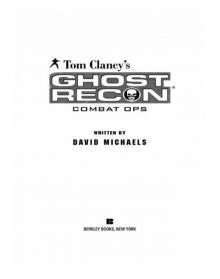 Combat Ops
Combat Ops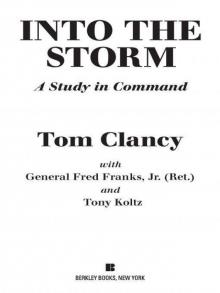 Into the Storm: On the Ground in Iraq
Into the Storm: On the Ground in Iraq Under Fire
Under Fire Point of Impact
Point of Impact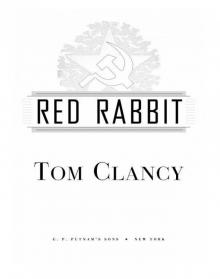 Red Rabbit
Red Rabbit Rainbow Six
Rainbow Six The Hunt for Red October
The Hunt for Red October The Teeth of the Tiger
The Teeth of the Tiger Conviction (2009)
Conviction (2009)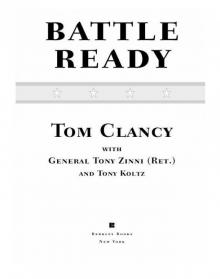 Battle Ready
Battle Ready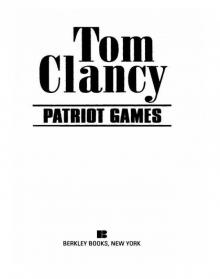 Patriot Games
Patriot Games The Sum of All Fears
The Sum of All Fears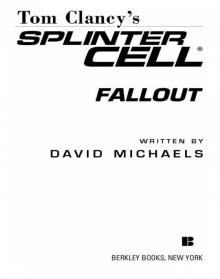 Fallout (2007)
Fallout (2007) Red Storm Rising
Red Storm Rising The Cardinal of the Kremlin
The Cardinal of the Kremlin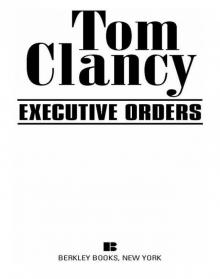 Executive Orders
Executive Orders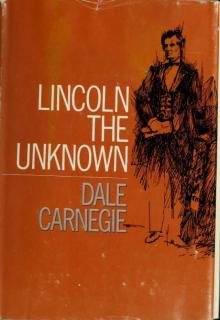 Lincoln, the unknown
Lincoln, the unknown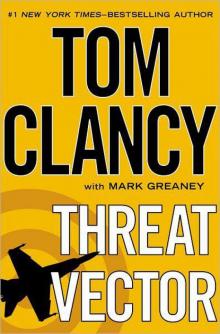 Threat Vector
Threat Vector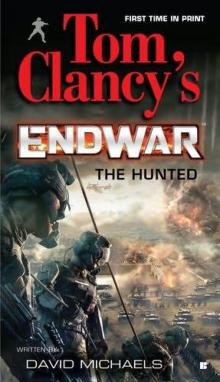 The Hunted
The Hunted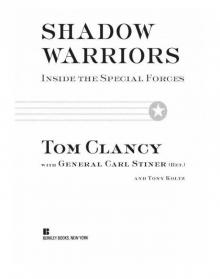 Shadow Warriors: Inside the Special Forces
Shadow Warriors: Inside the Special Forces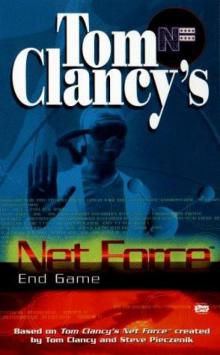 End Game
End Game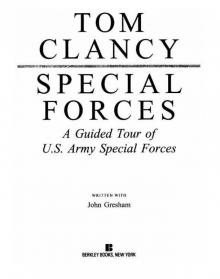 Special Forces: A Guided Tour of U.S. Army Special Forces
Special Forces: A Guided Tour of U.S. Army Special Forces Locked On
Locked On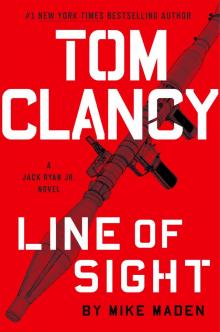 Line of Sight
Line of Sight Tom Clancy Enemy Contact - Mike Maden
Tom Clancy Enemy Contact - Mike Maden Fighter Wing: A Guided Tour of an Air Force Combat Wing
Fighter Wing: A Guided Tour of an Air Force Combat Wing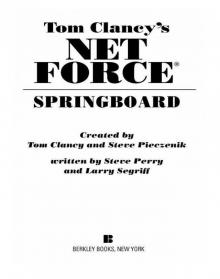 Springboard
Springboard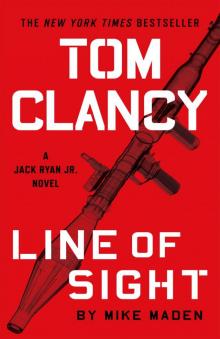 Line of Sight - Mike Maden
Line of Sight - Mike Maden EndWar
EndWar Dead or Alive
Dead or Alive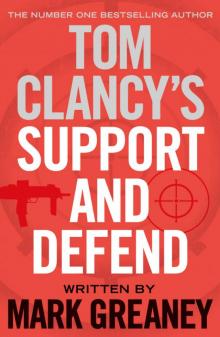 Tom Clancy Support and Defend
Tom Clancy Support and Defend Checkmate
Checkmate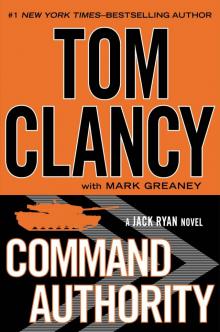 Command Authority
Command Authority Carrier: A Guided Tour of an Aircraft Carrier
Carrier: A Guided Tour of an Aircraft Carrier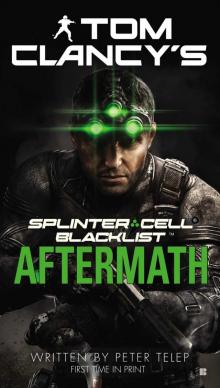 Blacklist Aftermath
Blacklist Aftermath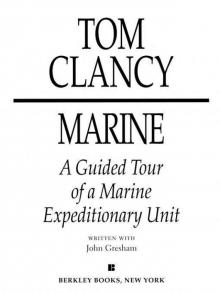 Marine: A Guided Tour of a Marine Expeditionary Unit
Marine: A Guided Tour of a Marine Expeditionary Unit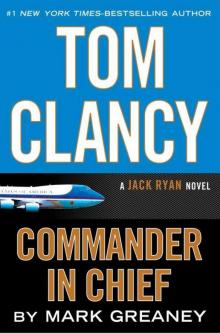 Commander-In-Chief
Commander-In-Chief Armored Cav: A Guided Tour of an Armored Cavalry Regiment
Armored Cav: A Guided Tour of an Armored Cavalry Regiment Tom Clancy's Jack Ryan Books 1-6
Tom Clancy's Jack Ryan Books 1-6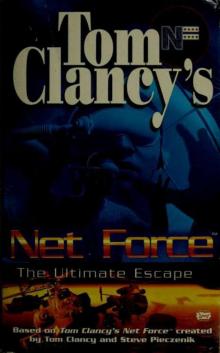 The Ultimate Escape
The Ultimate Escape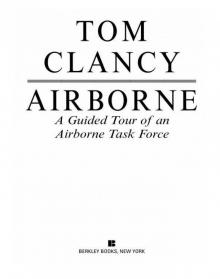 Airborne: A Guided Tour of an Airborne Task Force
Airborne: A Guided Tour of an Airborne Task Force Debt of Honor
Debt of Honor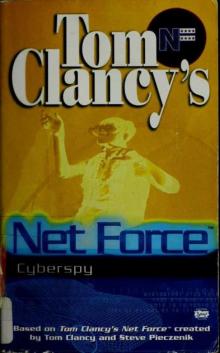 Cyberspy
Cyberspy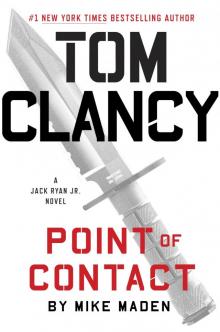 Point of Contact
Point of Contact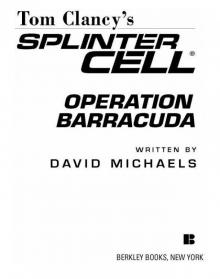 Operation Barracuda (2005)
Operation Barracuda (2005)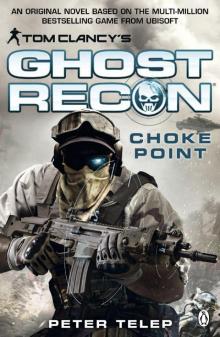 Choke Point
Choke Point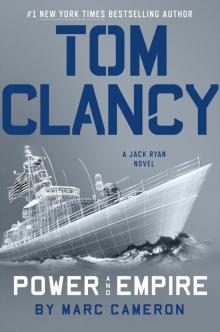 Power and Empire
Power and Empire Every Man a Tiger: The Gulf War Air Campaign
Every Man a Tiger: The Gulf War Air Campaign Endgame (1998)
Endgame (1998)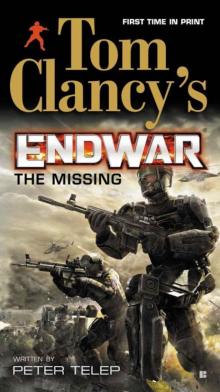 EndWar: The Missing
EndWar: The Missing Splinter Cell (2004)
Splinter Cell (2004)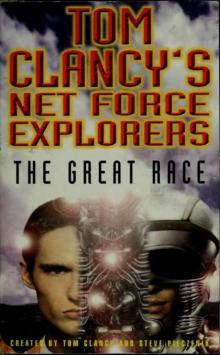 The Great Race
The Great Race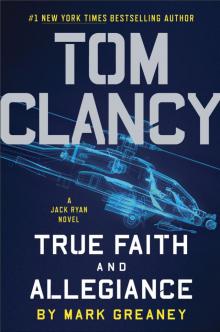 True Faith and Allegiance
True Faith and Allegiance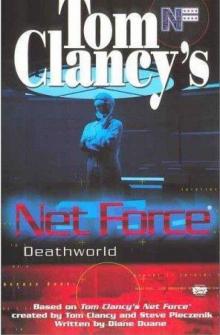 Deathworld
Deathworld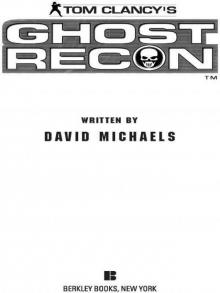 Ghost Recon (2008)
Ghost Recon (2008)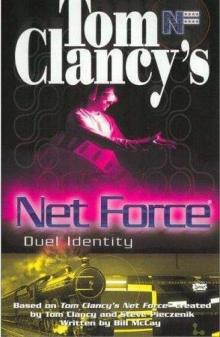 Duel Identity
Duel Identity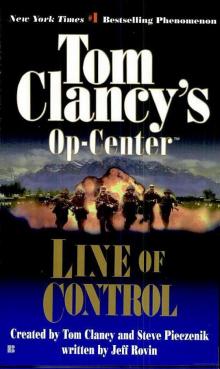 Line of Control o-8
Line of Control o-8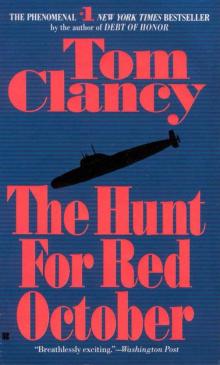 The Hunt for Red October jr-3
The Hunt for Red October jr-3 Hidden Agendas nf-2
Hidden Agendas nf-2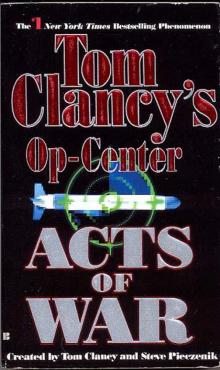 Acts of War oc-4
Acts of War oc-4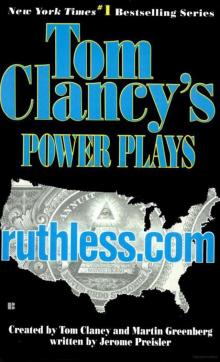 Ruthless.Com pp-2
Ruthless.Com pp-2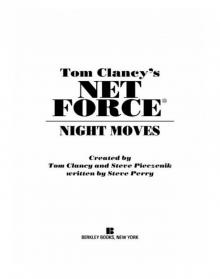 Night Moves
Night Moves The Hounds of Rome - Mystery of a Fugitive Priest
The Hounds of Rome - Mystery of a Fugitive Priest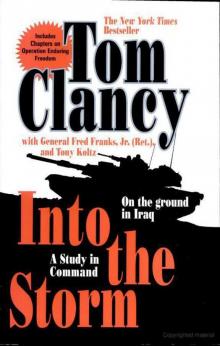 Into the Storm: On the Ground in Iraq sic-1
Into the Storm: On the Ground in Iraq sic-1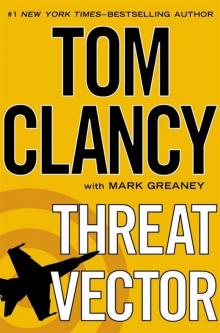 Threat Vector jrj-4
Threat Vector jrj-4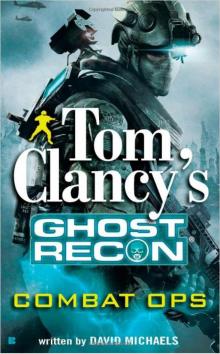 Combat Ops gr-2
Combat Ops gr-2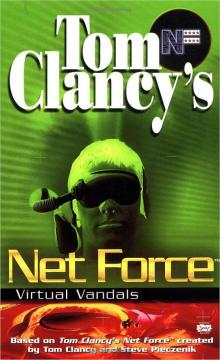 Virtual Vandals nfe-1
Virtual Vandals nfe-1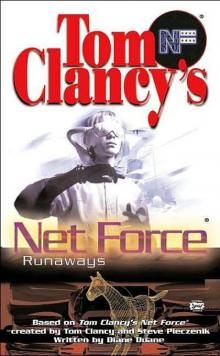 Runaways nfe-16
Runaways nfe-16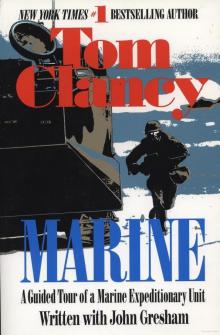 Marine: A Guided Tour of a Marine Expeditionary Unit tcml-4
Marine: A Guided Tour of a Marine Expeditionary Unit tcml-4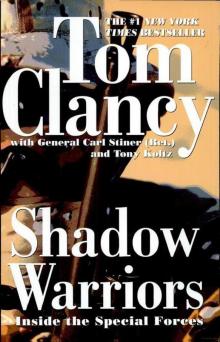 Shadow Warriors: Inside the Special Forces sic-3
Shadow Warriors: Inside the Special Forces sic-3 Jack Ryan Books 1-6
Jack Ryan Books 1-6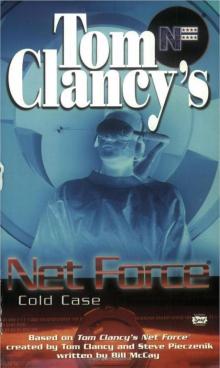 Cold Case nfe-15
Cold Case nfe-15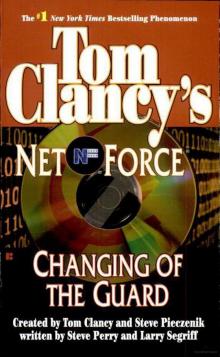 Changing of the Guard nf-8
Changing of the Guard nf-8 Splinter Cell sc-1
Splinter Cell sc-1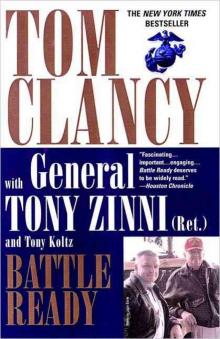 Battle Ready sic-4
Battle Ready sic-4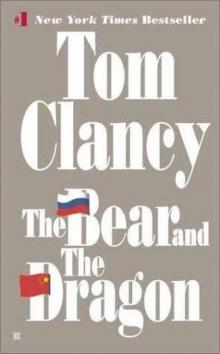 The Bear and the Dragon jrao-11
The Bear and the Dragon jrao-11 Fighter Wing: A Guided Tour of an Air Force Combat Wing tcml-3
Fighter Wing: A Guided Tour of an Air Force Combat Wing tcml-3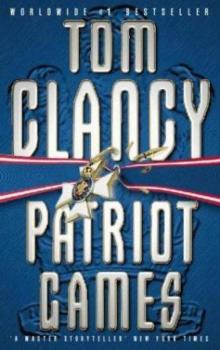 Patriot Games jr-1
Patriot Games jr-1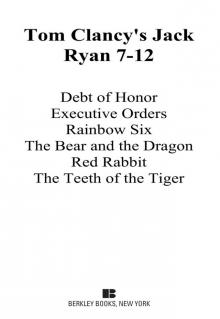 Jack Ryan Books 7-12
Jack Ryan Books 7-12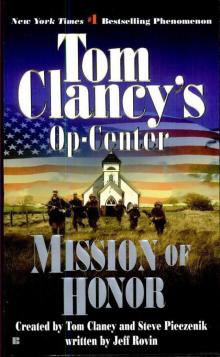 Mission of Honor o-9
Mission of Honor o-9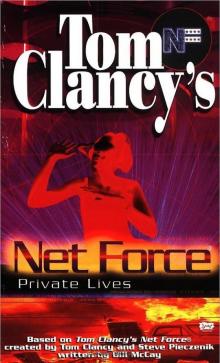 Private Lives nfe-9
Private Lives nfe-9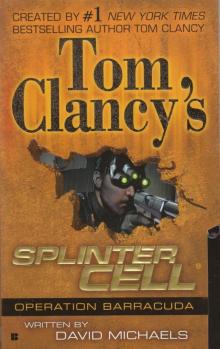 Operation Barracuda sc-2
Operation Barracuda sc-2 Cold War pp-5
Cold War pp-5 Point of Impact nf-5
Point of Impact nf-5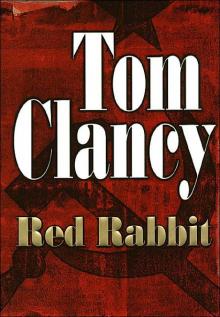 Red Rabbit jr-9
Red Rabbit jr-9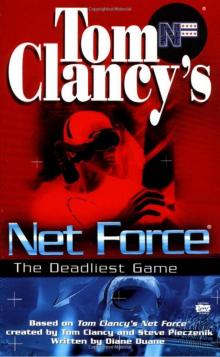 The Deadliest Game nfe-2
The Deadliest Game nfe-2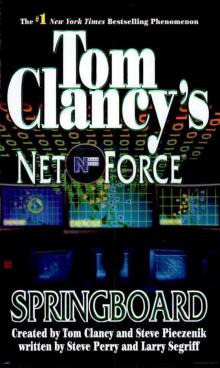 Springboard nf-9
Springboard nf-9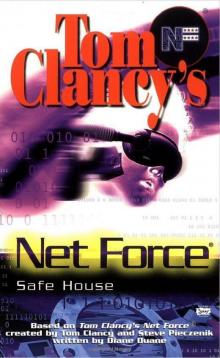 Safe House nfe-10
Safe House nfe-10 EndWar e-1
EndWar e-1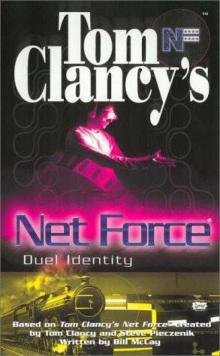 Duel Identity nfe-12
Duel Identity nfe-12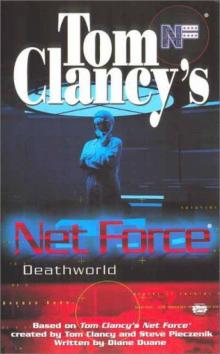 Deathworld nfe-13
Deathworld nfe-13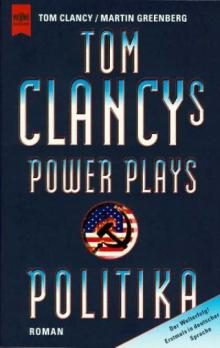 Politika pp-1
Politika pp-1 Rainbow Six jr-9
Rainbow Six jr-9 Tom Clancy's Power Plays 1 - 4
Tom Clancy's Power Plays 1 - 4 Endgame sc-6
Endgame sc-6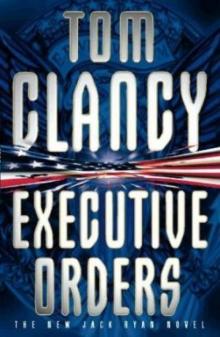 Executive Orders jr-7
Executive Orders jr-7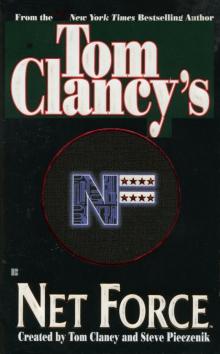 Net Force nf-1
Net Force nf-1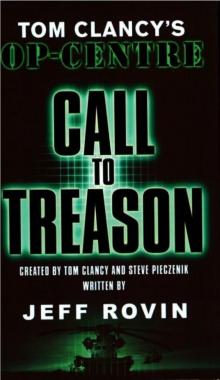 Call to Treason o-11
Call to Treason o-11 Locked On jrj-3
Locked On jrj-3 Against All Enemies
Against All Enemies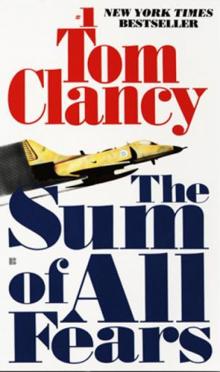 The Sum of All Fears jr-7
The Sum of All Fears jr-7 Sea of Fire o-10
Sea of Fire o-10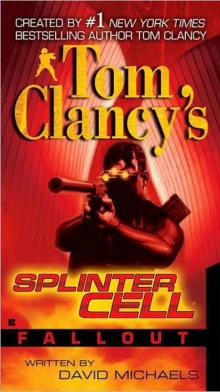 Fallout sc-4
Fallout sc-4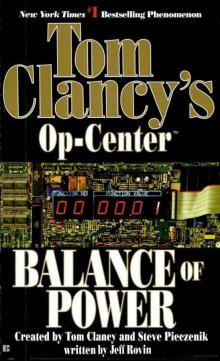 Balance of Power o-5
Balance of Power o-5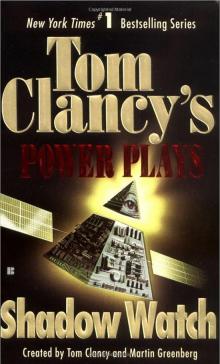 Shadow Watch pp-3
Shadow Watch pp-3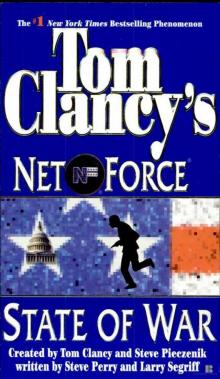 State of War nf-7
State of War nf-7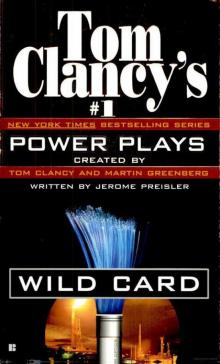 Wild Card pp-8
Wild Card pp-8 Games of State o-3
Games of State o-3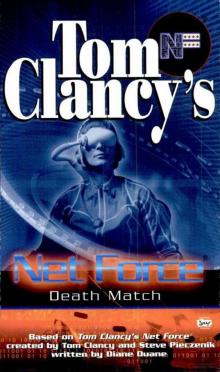 Death Match nfe-18
Death Match nfe-18 Against All Enemies mm-1
Against All Enemies mm-1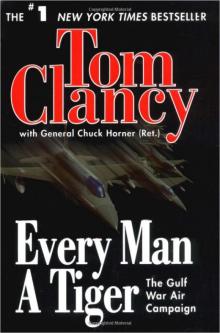 Every Man a Tiger: The Gulf War Air Campaign sic-2
Every Man a Tiger: The Gulf War Air Campaign sic-2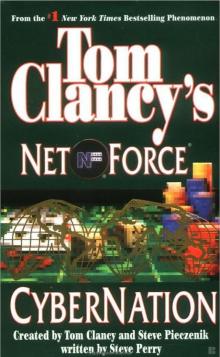 Cybernation nf-6
Cybernation nf-6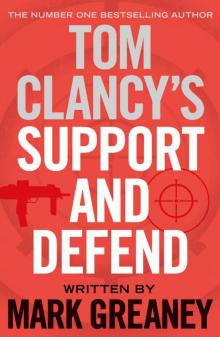 Support and Defend
Support and Defend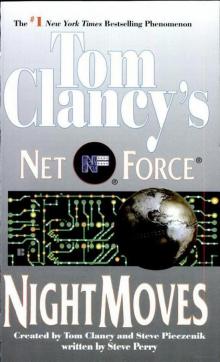 Night Moves nf-3
Night Moves nf-3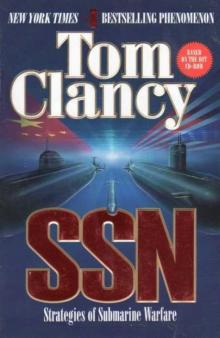 SSN
SSN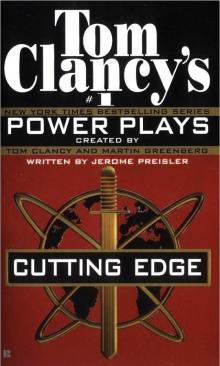 Cutting Edge pp-6
Cutting Edge pp-6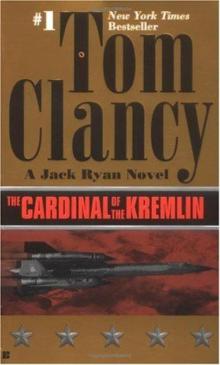 The Cardinal of the Kremlin jrao-5
The Cardinal of the Kremlin jrao-5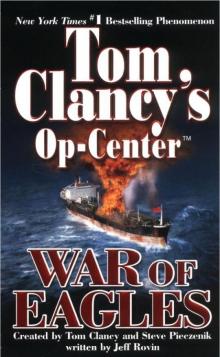 War of Eagles o-12
War of Eagles o-12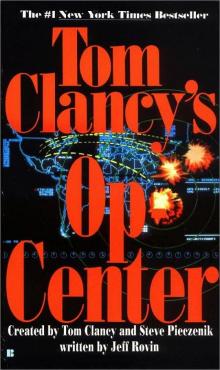 Op-Center o-1
Op-Center o-1 Mirror Image o-2
Mirror Image o-2 The Archimedes Effect nf-10
The Archimedes Effect nf-10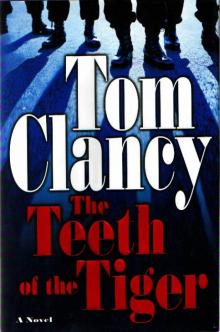 Teeth of the Tiger jrj-1
Teeth of the Tiger jrj-1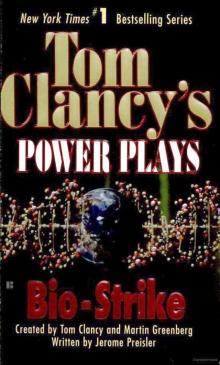 Bio-Strike pp-4
Bio-Strike pp-4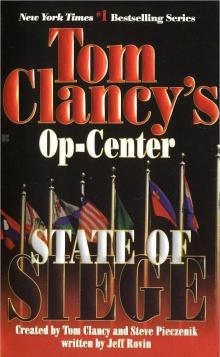 State of Siege o-6
State of Siege o-6 Debt of Honor jr-6
Debt of Honor jr-6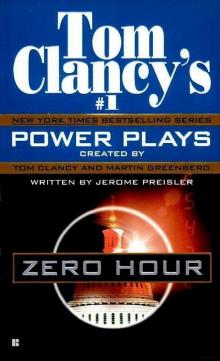 Zero Hour pp-7
Zero Hour pp-7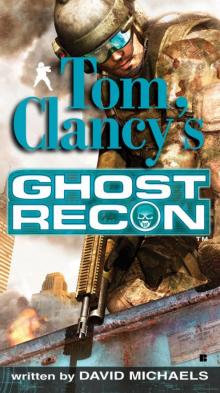 Ghost Recon gr-1
Ghost Recon gr-1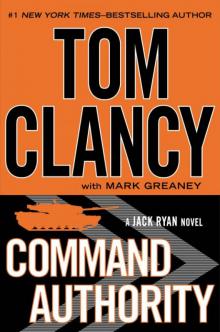 Command Authority jr-10
Command Authority jr-10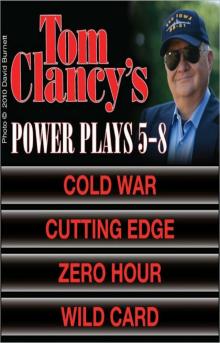 Tom Clancy's Power Plays 5 - 8
Tom Clancy's Power Plays 5 - 8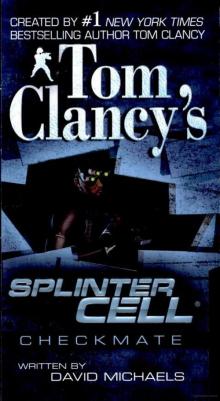 Checkmate sc-3
Checkmate sc-3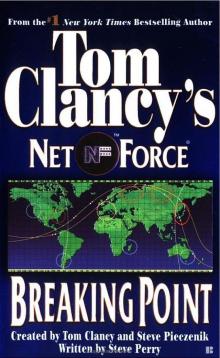 Breaking Point nf-4
Breaking Point nf-4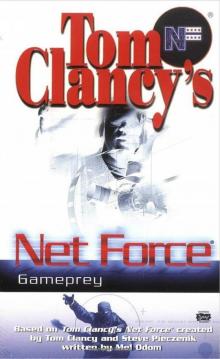 Gameprey nfe-11
Gameprey nfe-11 The Hunted e-2
The Hunted e-2 Hidden Agendas
Hidden Agendas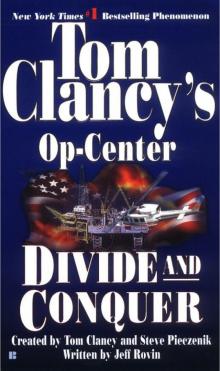 Divide and Conquer o-7
Divide and Conquer o-7